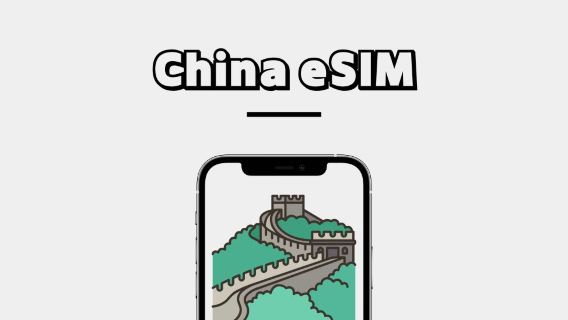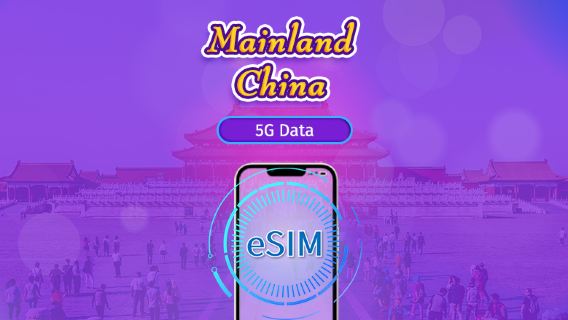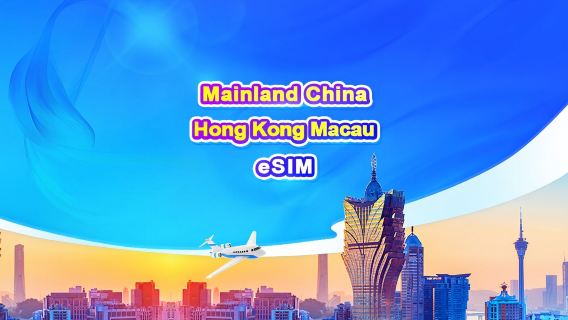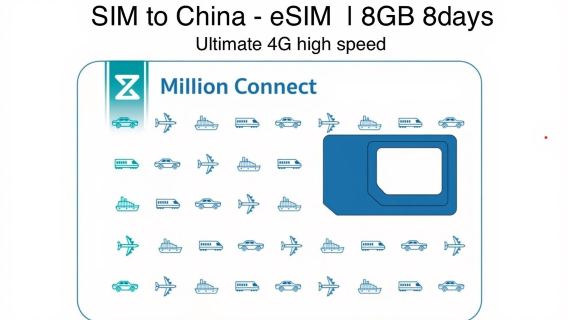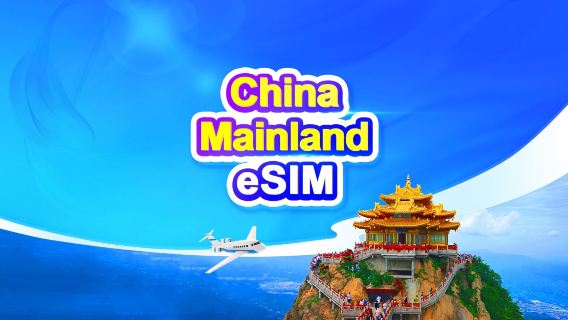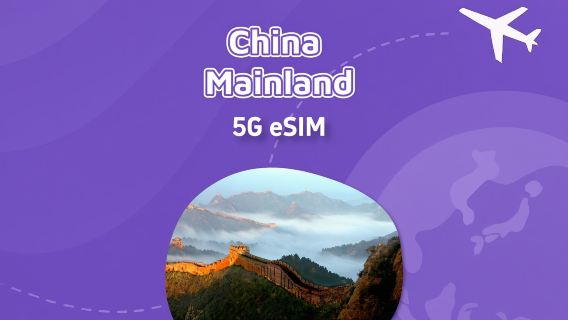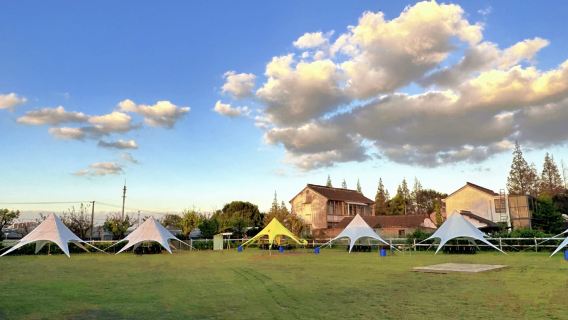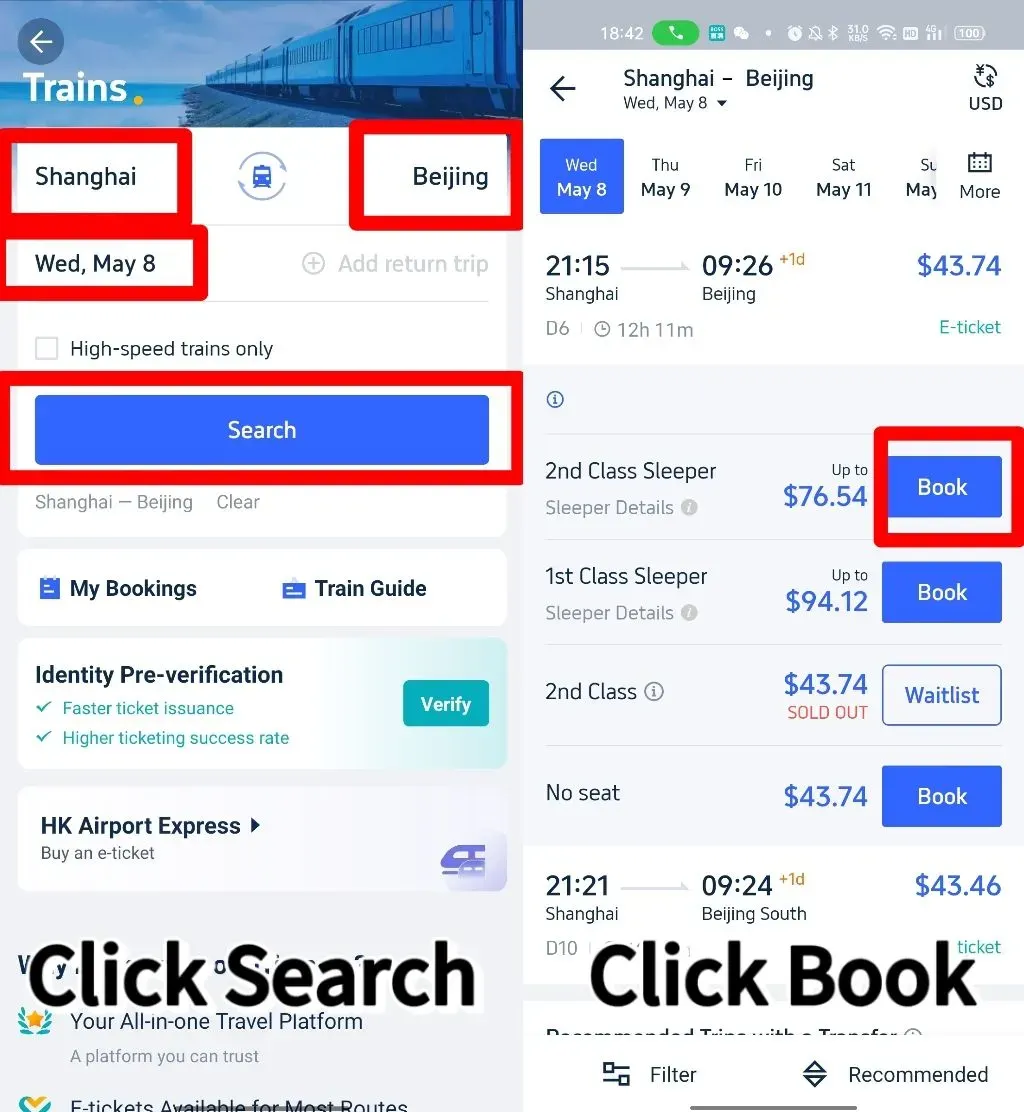
Traveling by train is the best way to explore China - trains are fast, cheap and punctual. This guide introduces how foreigners can buy train tickets in China, how to use China train e tickets, understand China train ticket types, and how to book China train on Trip.com with 3% Off. Let's get started!
[3% Off] Trip.com China Train Promo Code
How to Use China Train E-Ticket for Foreigners
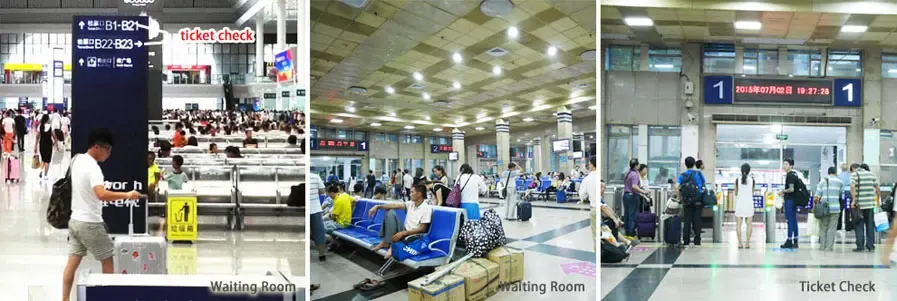
Source from Chinahighlights
China mostly uses e-tickets for trains now—they’re way easier than paper tickets (thus, no long lines or worry about lost tickets). Here’s how to use:
- Book an E-Ticket on Trip.com
When you book, you’ll get a confirmation email and app notification with your train number, seat, and carriage details—all in English. You only need your passport to board. - Enter the Train Station
Walk towards the main entrance. Use your passport at the automatic boarding gate (if the boarding gate scans your passport). If not, please go to the manual “人工通道” (staffed channel) and show your passport to the staff. If you like, you can print a ticket receipt at the station, but this is not mandatory. - Board the Train
At the boarding gate, scan your passport before the automatic check-in. If there is no machine, please use the manual channel - the staff will check your passport. - Exit the Station
Upon arrival, scan your passport at the self-service exit or show it at the manual exit. Keep your passport at hand!
How to Buy Train Tickets in China as a Foreigner
Foreigners can buy train tickets in China through 2 main platforms:
- Official platform: 12306.cn (China’s official railway site—has limited English support).
- Third-party platform: Trip.com (user-friendly for international travelers, offers English support, and accepts foreign payment methods like PayPal or credit cards).
For ease and convenience, most foreigners prefer Trip.com—it’s simple to use, has 24/7 English customer service, and lets you book tickets with just a passport.
Types of China Train Tickets
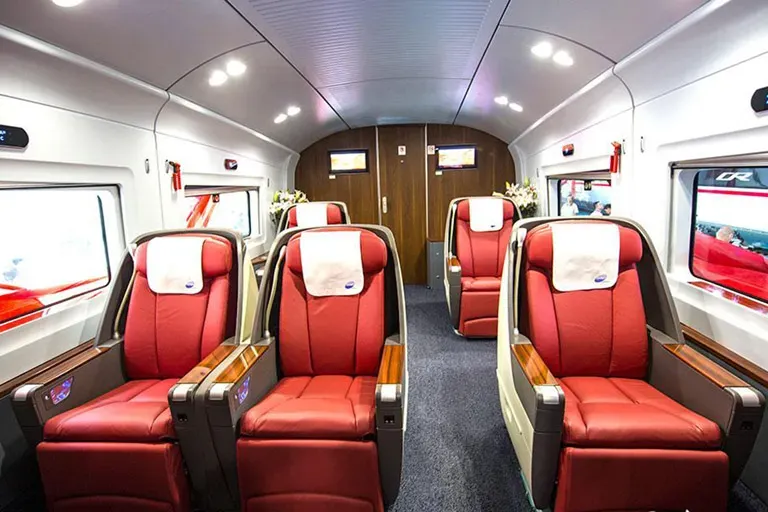
China has two main train types—high-speed (bullet) and regular—with different ticket options. Here’s what you can choose from:
Prefix | Train Type | Average Speed |
G | High Speed EMU Trains (gaotie) | 300 km/h or above |
D | Electric Multiple Units Trains (dongche) | 200-250 km/h |
C | Intercity EMU Trains (chengji) | 240 km/h |
K/T/Z | Normal Train Types | Varies |
High-Speed (Bullet) Trains (G, D, C Trains)
These trains are fast and modern. Ticket types include:
- Second Class Seat: The most affordable option, great for short trips.
- First Class Seat: More space and comfort than second class.
- Business Class Seat: Premium service (ideal for long journeys).
- Soft Sleeper / Deluxe Soft Sleeper: Beds for overnight high-speed trips (deluxe is more private).
Regular Trains (Z, T, K Trains)
Slower but cheaper, good for long or budget trips. Ticket types:
- Hard Seat: The cheapest (but not comfortable for long rides).
- Soft Seat: More comfortable than hard seats.
- Hard Sleeper / Soft Sleeper: Beds for overnight travel (soft sleeper is nicer).
How to Read China Train e Ticket Info
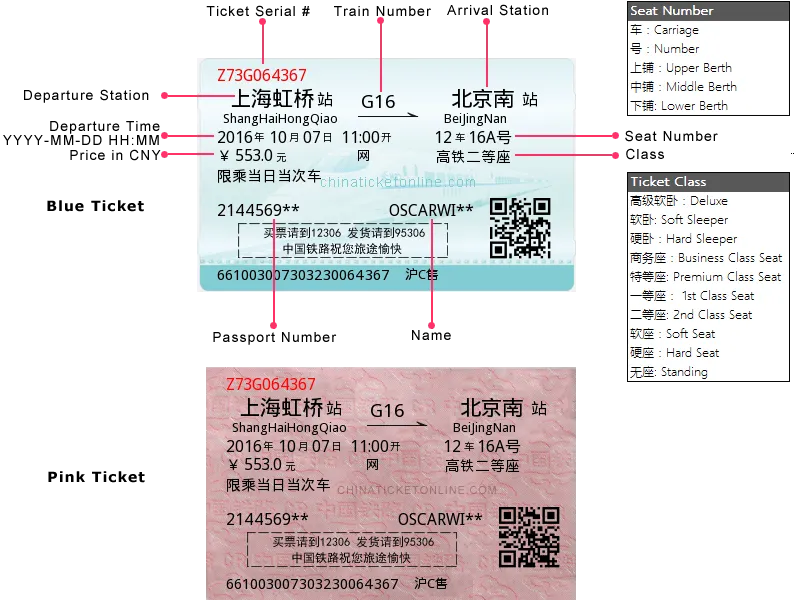
Source from China Ticket Online
- Blue Magnetic Ticket: This type of ticket can be scanned at the automatic ticket gates of most stations, making it convenient and fast for entry and exit.
- Pink Paper Ticket: As they cannot be scanned automatically, manual verification by station staff is required.
China Train Ticket - Ticket Number
The ticket number is located in the upper left corner of the ticket and consists of letters and numbers. It is a serial number. Each ticket issued from a specific terminal station or ticket window is unique. Generally speaking, this number is not important for your travel needs.
China Train Ticket - Boarding Gate
Your boarding gate information is displayed in the top right corner of the ticket. This indicates where you should go to board your train once you are inside the train station. While most tickets include this information, if yours does not, you can find the gate number displayed on large LED screens at the station right after you pass through the security check.
China Train Ticket - Departure and Arrival Stations
All of these are displayed in bold and eye-catching font. Stations with “North/South/East/West” (北 / 南 / 东 / 西) indicate location (like “Beijing South Station”). The departure station is on the left and the arrival station is on the right. Under the Chinese characters, you will find that the names of these stations have been transliterated into pinyin, and these pinyin usually do not directly correspond to the English spelling.
China Train Ticket - Train Type and Number
Your train type and number can be found between the departure station and the destination station on your ticket. This section begins with a letter indicating the type of train, followed by up to 4 digits to specify the exact train you will take.
China Train Ticket - Departure Date and Time
The departure date and time are listed in pinyin below the station name on the train ticket. This information is organized in sequence: year, month, date, hour and minute, and in a 24-hour clock format. It is worth noting that the arrival time is not shown on the tickets. The departure time is always given in China Standard Time (CST), which is GMT +8.
年 | 月 | 日 | 开 |
Year | Month | Day | Depart |
China Train Ticket - Carriage and Seat Information
The carriage and seat number on your train ticket are found right under the Pinyin translation of the arrival station. This section clearly specifies your assigned seat and carriage, formatted as carriage/seat. This detail tells you precisely where you'll be seated during your journey.
China Train Ticket - Price and Class
The fifth row of your train ticket displays the price on the left and the travel class on the right. The price is shown in Chinese Yuan (¥). Table that categorizes the different class types available on China trains, along with their English translations 👇
Chinese | English | Chinese | English |
高级软卧 | Deluxe Soft Sleeper | 商务座 | Business Class Seat |
软卧 | Soft Sleeper | 特等座 | Premium Class Seat |
硬卧 | Hard Sleeper | 一等座 | First Class Seat |
二等座 | Second Class Seat | 软座 | Soft Seat |
硬座 | Hard Seat | 无座 | No seat (Standing) |
China Train Ticket - Personal Information
Due to the real-name policy in China, your train ticket will include your name and a partially masked passport or ID number to protect your privacy. The sensitive parts of these numbers are obscured with asterisks (*) to ensure security while still adhering to identification requirements. This ensures that while your identity is verifiable, it remains protected.
Popular China High-Speed Train Routes & Tickets
You can book these top routes China train tickets easily on Trip.com:
Route | Train Type | Travel Time | Price Range |
G (High-Speed) | 4.5–6h | From $76.55 | |
G (High-Speed) | 8–10h | From $119.25 | |
G (High-Speed) | 11–12h | From $121.68 | |
G (High-Speed) | 1h | From $29.77 | |
G (High-Speed) | 1.5–2h | From $18.00 | |
D (High-Speed) | 2–3h | From $13.36 |
Travel All Over China by Train
China Trains, especially the high-speed lines D and G, are renowned for their punctuality and reliability, often experiencing minimal delays. China's high-speed rail can connect all the city centers, unlike airports which can be located far from the city center and require additional travel time. In addition, train travel allows you to comfortably enjoy the vast and diverse landscapes of China, with ample legroom and the freedom to move around during the journey.
Advantage | Description |
Punctuality | D-trains and G-trains are notably punctual, facing minimal delays. |
Connectivity | Major railway stations are well-connected to other transport modes like metros, buses, taxis, and coaches. |
Scenic Views | Trains provide the opportunity to enjoy scenic landscapes through the journey, unlike air travel. |
Comfort | More legroom and the freedom to walk around contribute to a comfortable travel experience. |
Speed and Efficiency | For many routes, high-speed trains are faster than flying when considering total travel time, including transfers. |
How to Buy China Train Ticket with Passport
Click to Book Cheap China Train Ticket Easily
Trip.com is the top choice for foreigners - it is easy to use, supports multiple languages, and accepts payment methods like PayPal or international credit cards. Here's how to make a reservation:
Book on Trip.com Website
- Log In & Enter Travel Details
Go to Trip.com. Log in and then enter your departure city, destination city and travel date. - Choose a Train & Seat Class
Choose a train (high-speed or regular). Select your seat class (second class, first class, business class, or sleeper). - Add Your Passenger Info
Enter your name, passport number and contact information. - Select a Seat & Pay
Choose a seat (by the window, aisle or in the middle). Pay by credit card, paypal or Alipay/wechat Pay, etc.
How to Book China Train Ticket on Trip.com App
Book on Trip.com App
- Open the App & Go to “Trains”
Log in to your Trip.com account and then click on "Train" on the home screen. - Search for Trains
Enter your departure city, destination city and departure date. After you finished, tap "Search". - Pick a Train & Seat
Choose your favorite train, and then select the seat class and specific seat. But you may not choose the exact compartment. - Enter Passenger Info & Pay
Add your passport details and contact information. Use your preferred payment method (credit card, Alipay, etc.).
12306 vs. Trip.com
When booking train tickets in China, travelers can choose between 12306, the official site of China Railway Corporation, and Trip.com, a reliable international travel agency. While 12306 allows users to book directly, it often experiences technical issues and offers support only in Chinese during limited hours. Conversely, Trip.com provides a user-friendly interface, multilingual 24/7 customer support, and accepts various payment methods, making it cheaper and more accessible for international travelers.
| Feature | 12306 | Trip.com |
| Booking Source | Official China Railway website | Best International travel agency |
| Additional Fees | No extra fees | Possible extra fees |
| Service Hours | 5 AM to 1 AM (11:30 PM on Thursdays) | 24/7 |
| Website Reliability | Occasional errors and crashes | Stable and user-friendly |
| Customer Service | Chinese only, limited hours | Multilingual, available 24/7 |
| Payment Options | Limited to local methods | International credit cards, AliPay, WeChat Pay |
| Additional Services | None | Hotels, flights, tours |
[8% Off] China Hotel Recommendations
After booking the train tickets to China, don't forget to find an affordable hotel or other accommodation. Use the following coupon to enjoy an 8% discount when booking hotels in China on Trip.com.
FAQs about China Train Ticket
How do foreigners buy train tickets in China?
Foreigners can purchase train tickets in China from several sources including railway stations or ticket outlets, through the official hotline at 95105105, or online via the official website of the China Railway Corporation at 12306.cn. Additionally, tickets can be bought through Trip.com online or mobile app. It’s worth noting that buying tickets directly at railway stations often involves waiting in long queues.Is train travel cheap in China?
Train travel in China is an affordable alternative to flying, offering fast and reliable service. It's also more environmentally friendly. Most major cities in China are well-connected by high-speed rail.How early can I buy train tickets in China?
You can book train tickets online up to 30 days before departure and at station ticket counters up to 28 days in advance for most long-distance trains. Booking cannot be done before the reservation window opens. For D-category sleeper trains, bookings open 20 days in advance, and for C-category trains, bookings start just 10 days before departure.How much is a train ticket in China?
Prices vary: High-speed (G/D trains): ~$18–$120 (depends on the route and seat class). Regular (Z/T/K trains): ~$7–$40 (cheaper, especially for hard seats or sleepers).How do I use Trip.com China train tickets?
After booking, use your passport to enter the station and board the train. Trip.com sends e-ticket details to your email or app—you don’t need to print anything unless you want to.Can I buy train tickets on Alipay?
Yes, but Alipay mostly requires a Chinese bank card. Foreigners find Trip.com easier because it accepts international payments.What’s the best site to book a train ticket in China?
For foreigners, Trip.com is the best choice—it’s user-friendly, has English support, and offers easy payment options.Can foreigners buy tickets on 12306?
Yes, but 12306 has limited English. You need a passport to book, but Trip.com is easier for non-Chinese speakers.




 3555 booked
3555 booked